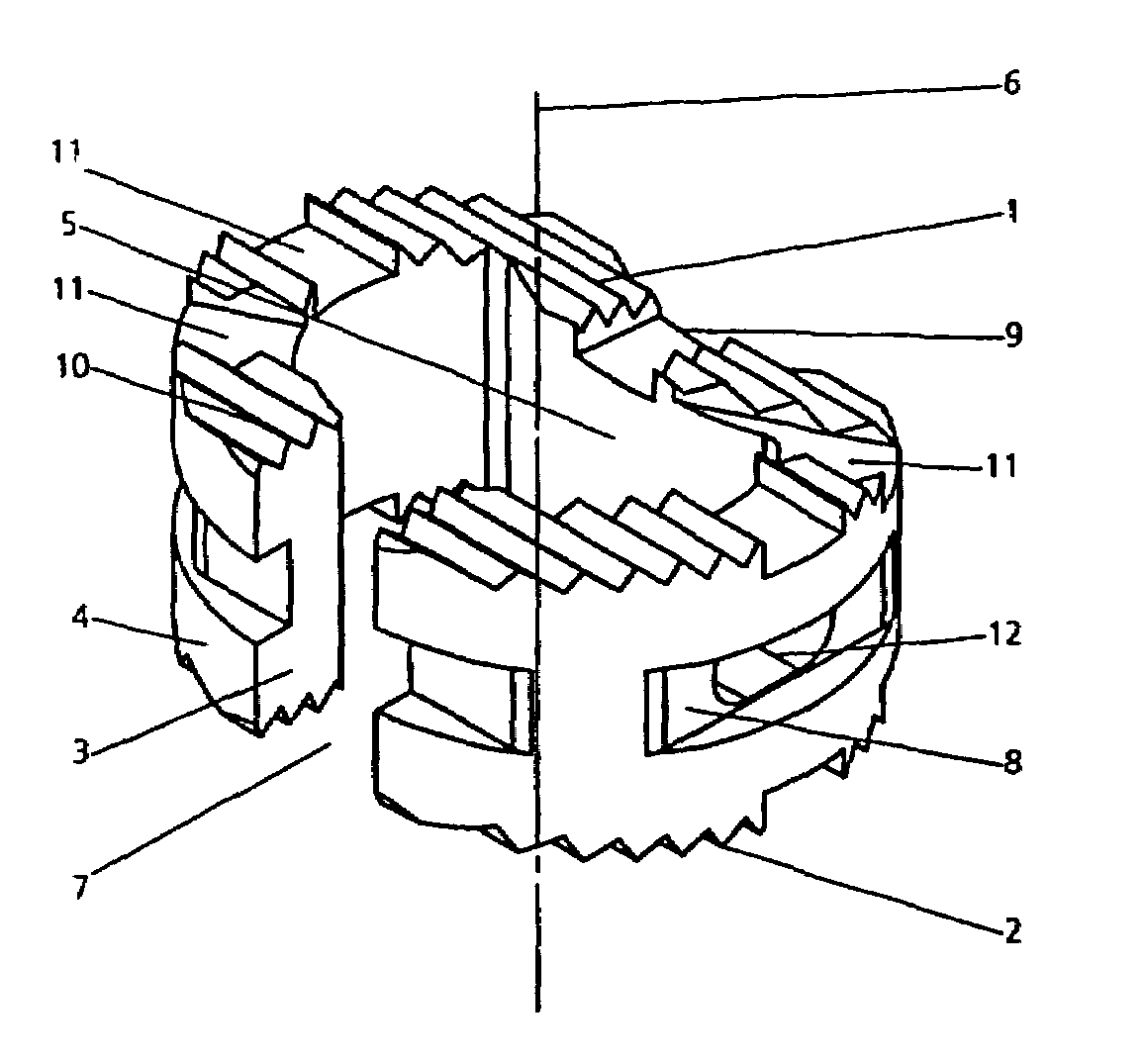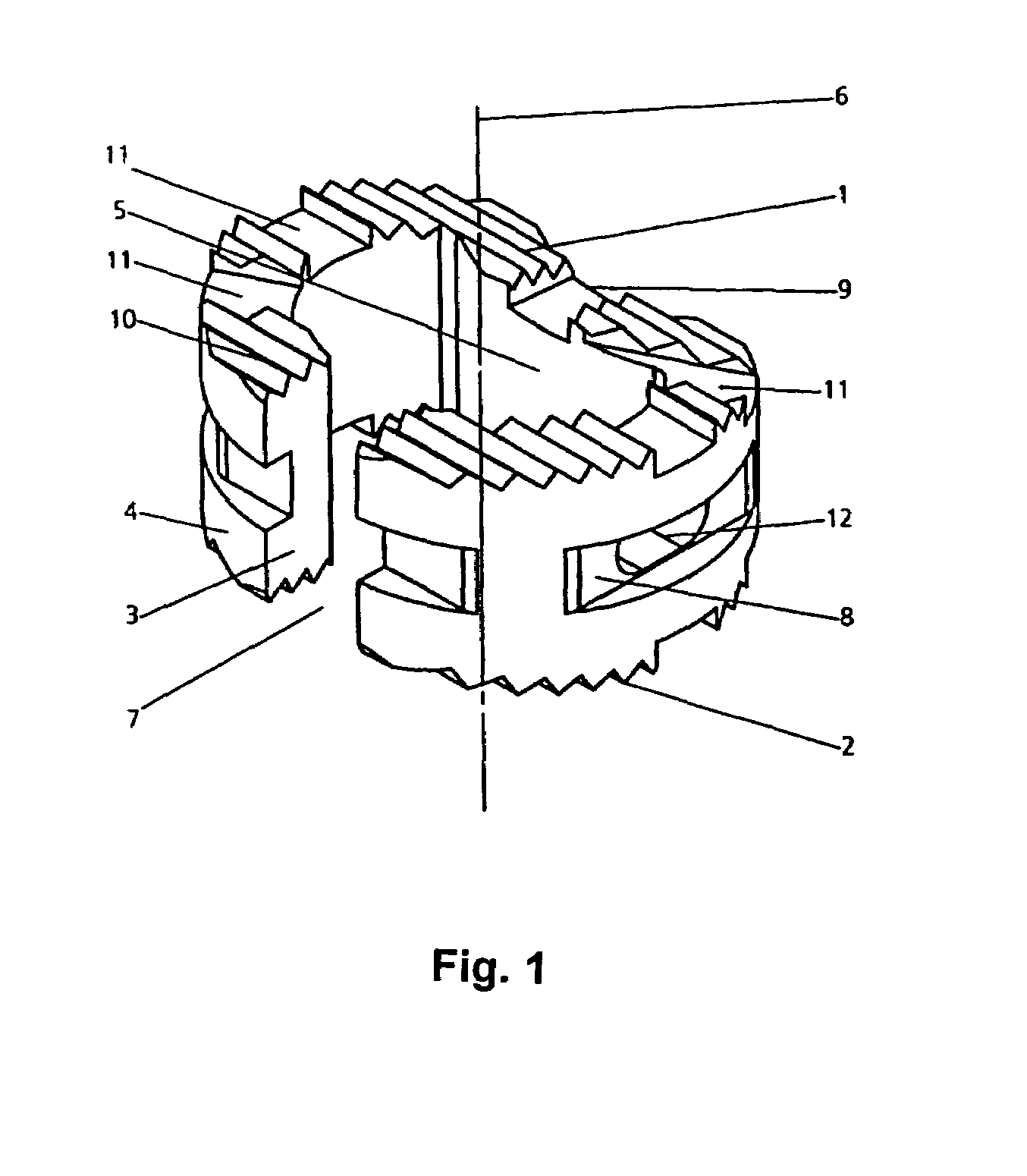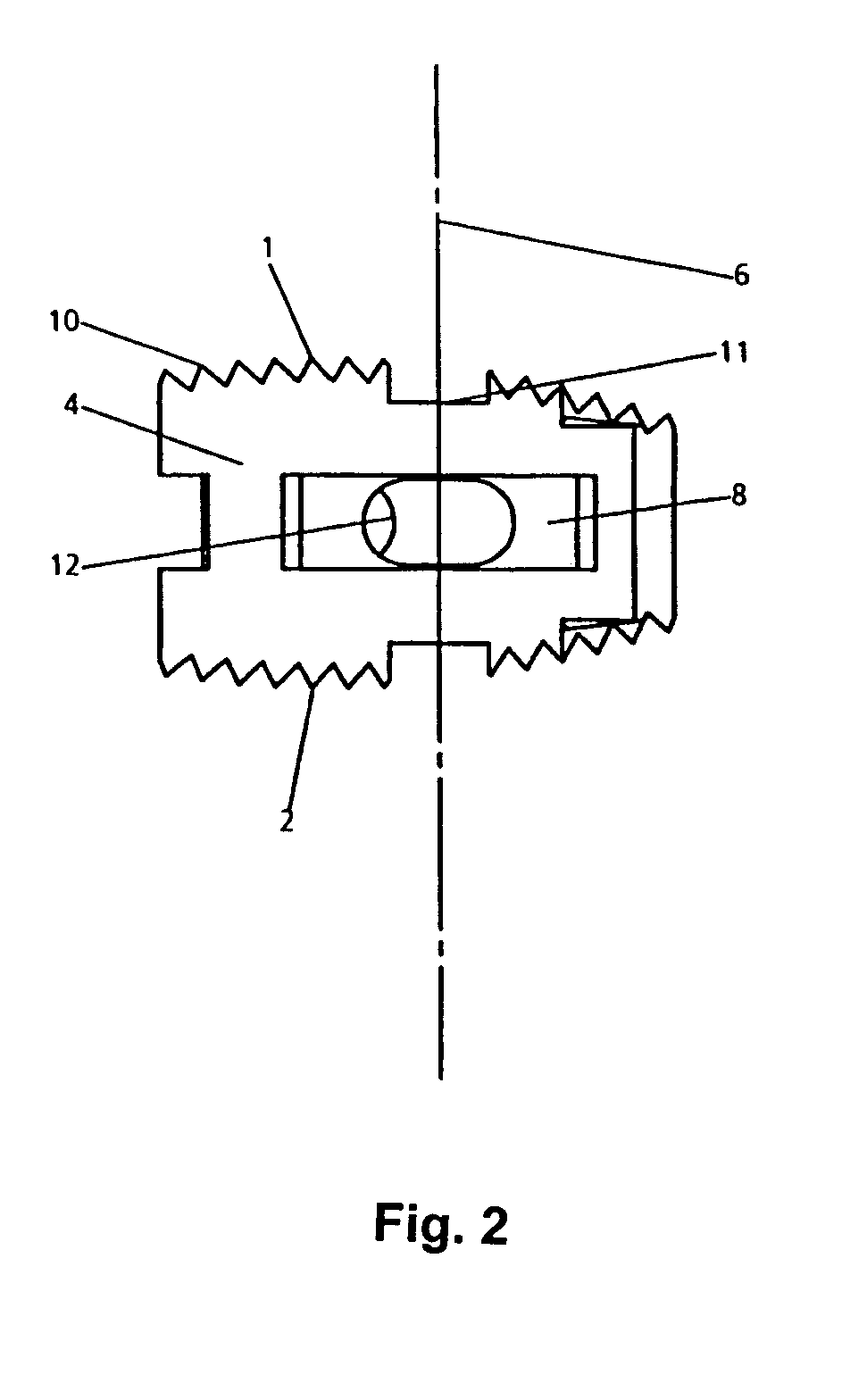Intervertebral implant
a technology of intervertebral implants and implants, which is applied in the field of intervertebral implants, can solve the problems of impossible post-surgical assessment of the fusion of vertebrae, and achieve the effect of preventing the implant and high degree of primary stability
- Summary
- Abstract
- Description
- Claims
- Application Information
AI Technical Summary
Benefits of technology
Problems solved by technology
Method used
Image
Examples
Embodiment Construction
[0022]The intervertebral implant shown in FIGS. 1 and 2 is shaped in the form of a hollow cylinder. It has a first cover face 1, a second base face 2, a hollow cylinder wall 3 including an outer lateral area 4 and an inner lateral area 5, as well as a hollow cylinder central axis 6.
[0023]The implant is formed at least 95 percent by volume of a radiolucent material such as PEEK (group of polyaryletherketones). Such a material must have a modulus of elasticity of between 1 and 20 GPa. Preferably, the modulus of elasticity is between 3 and 5 GPa.
[0024]The intervertebral implant further includes three markers (not shown in the drawings) made of a radiopaque material (tantalum or titanium) which together form at most 5 percent by volume of said intervertebral implant. The total volume (100 percent) is to be understood as the volume occupied by the material of the intervertebral implant, excluding the hollow space enclosed by the implant.
[0025]The cover face 1 and the base face 2 of the i...
PUM
 Login to View More
Login to View More Abstract
Description
Claims
Application Information
 Login to View More
Login to View More - R&D
- Intellectual Property
- Life Sciences
- Materials
- Tech Scout
- Unparalleled Data Quality
- Higher Quality Content
- 60% Fewer Hallucinations
Browse by: Latest US Patents, China's latest patents, Technical Efficacy Thesaurus, Application Domain, Technology Topic, Popular Technical Reports.
© 2025 PatSnap. All rights reserved.Legal|Privacy policy|Modern Slavery Act Transparency Statement|Sitemap|About US| Contact US: help@patsnap.com



